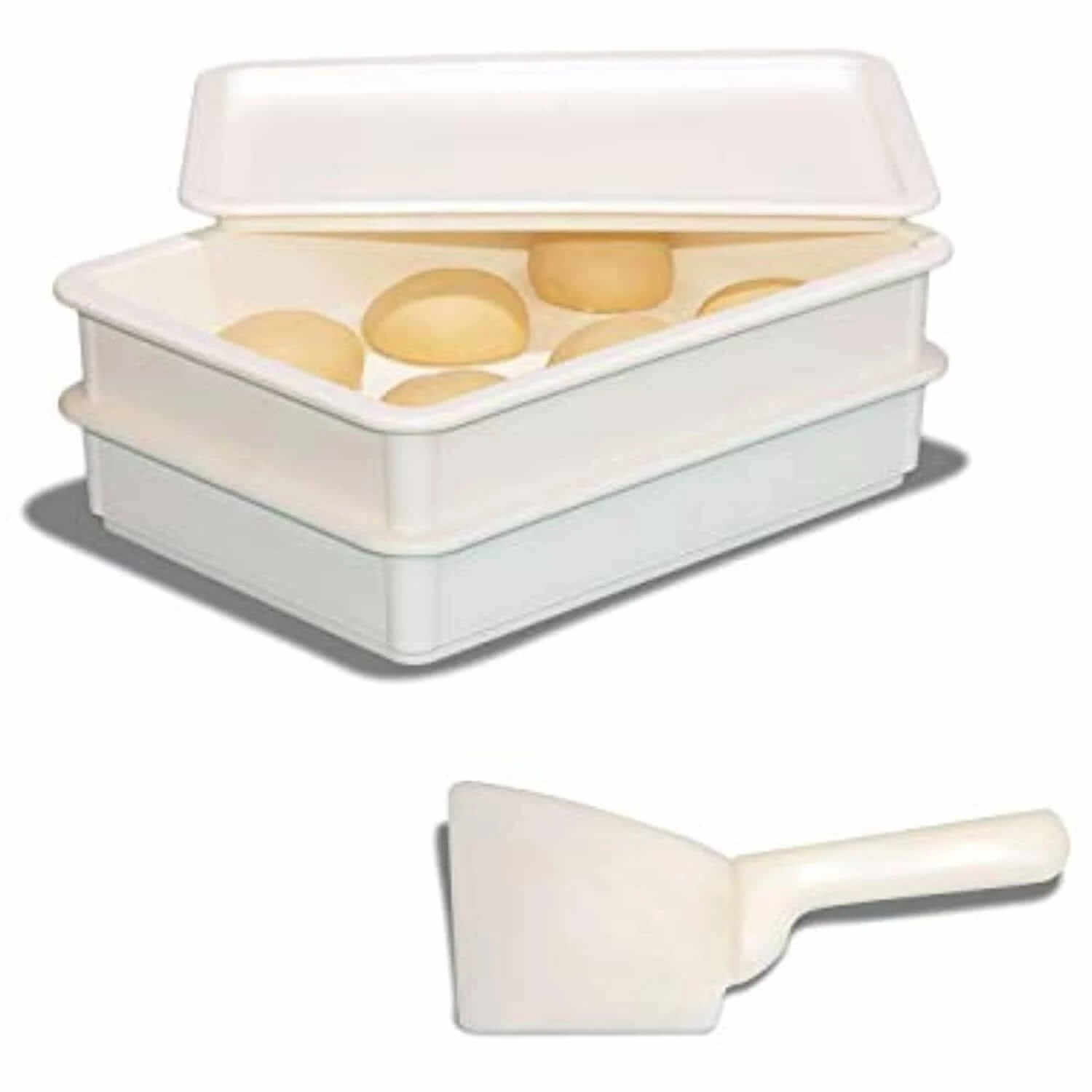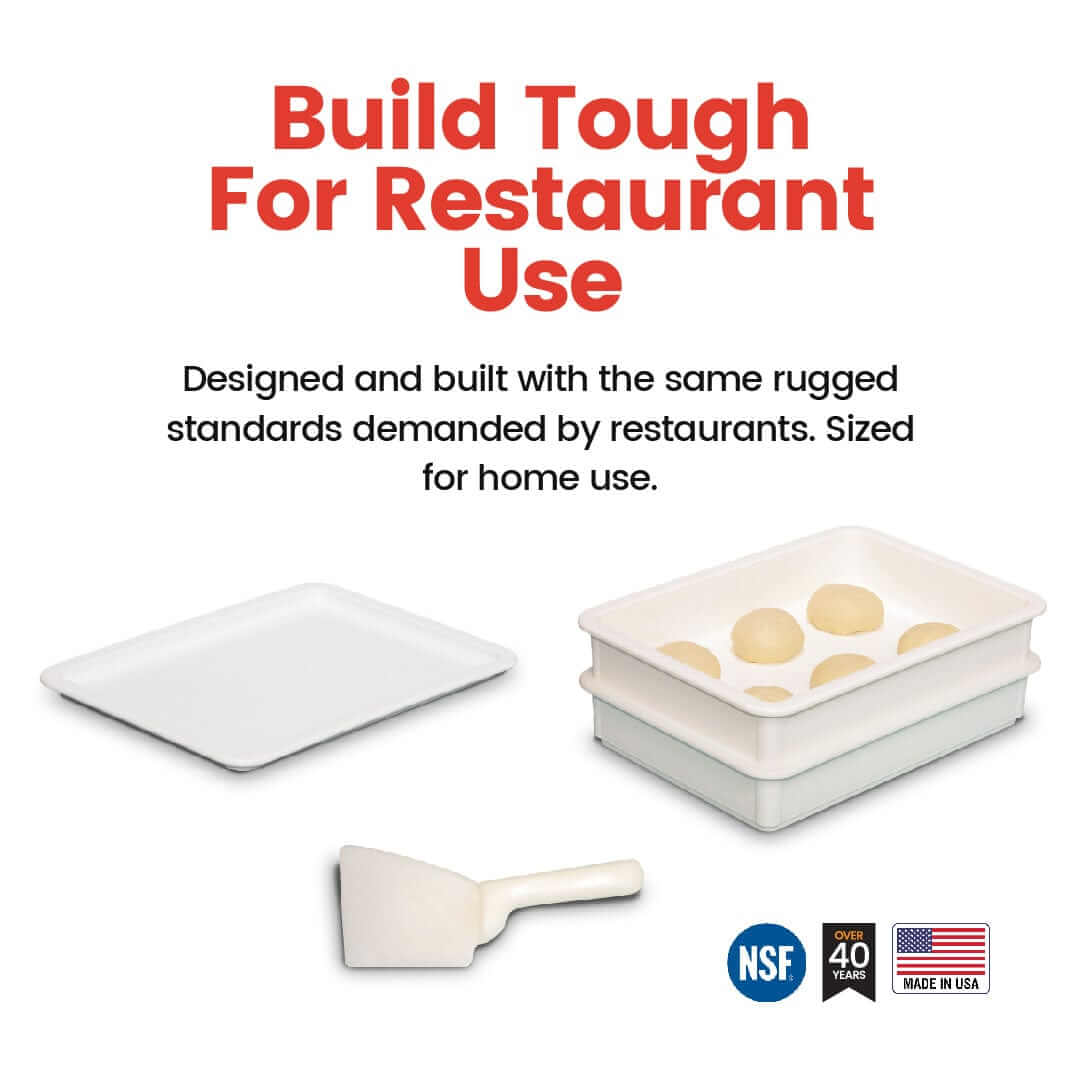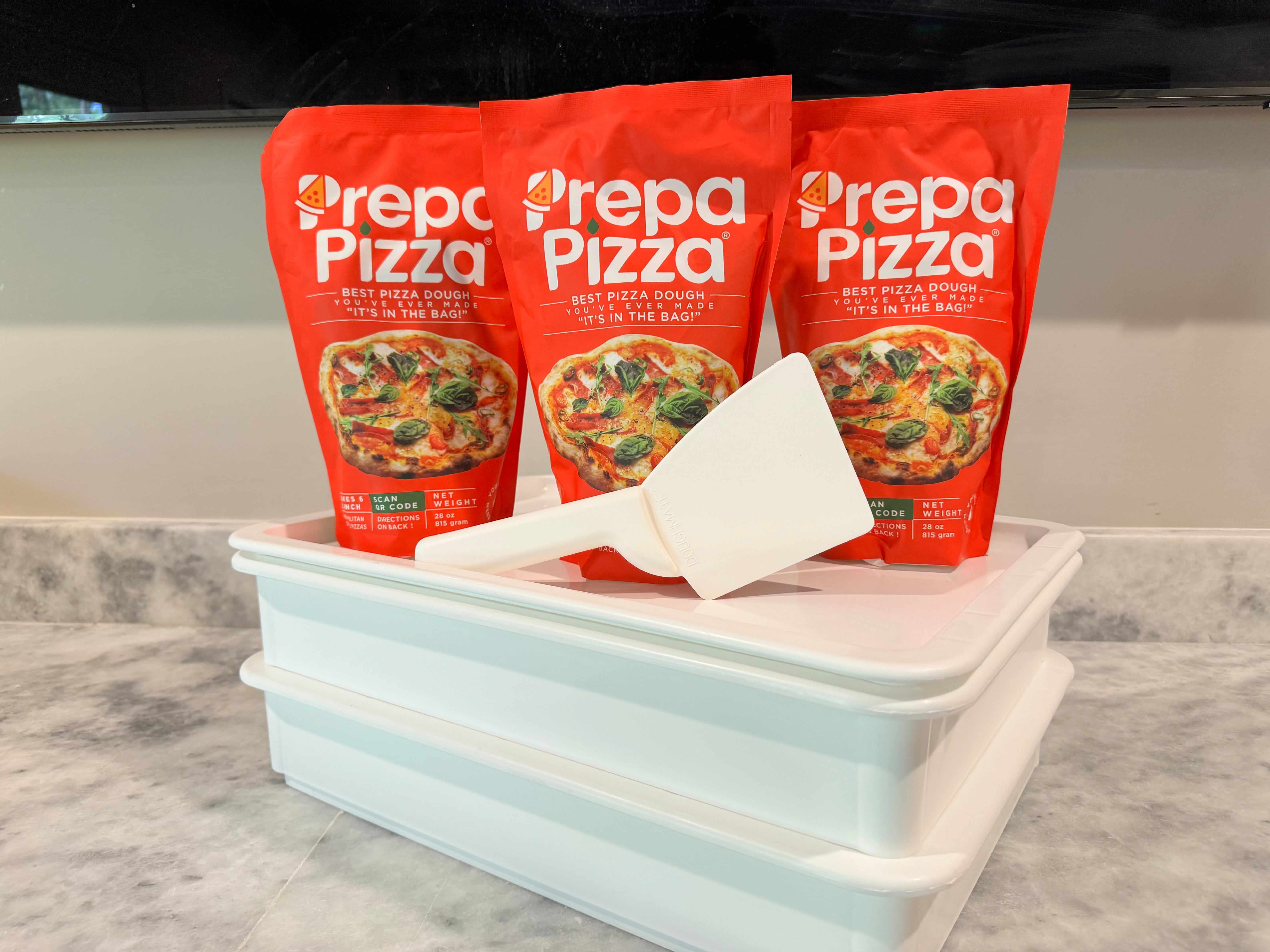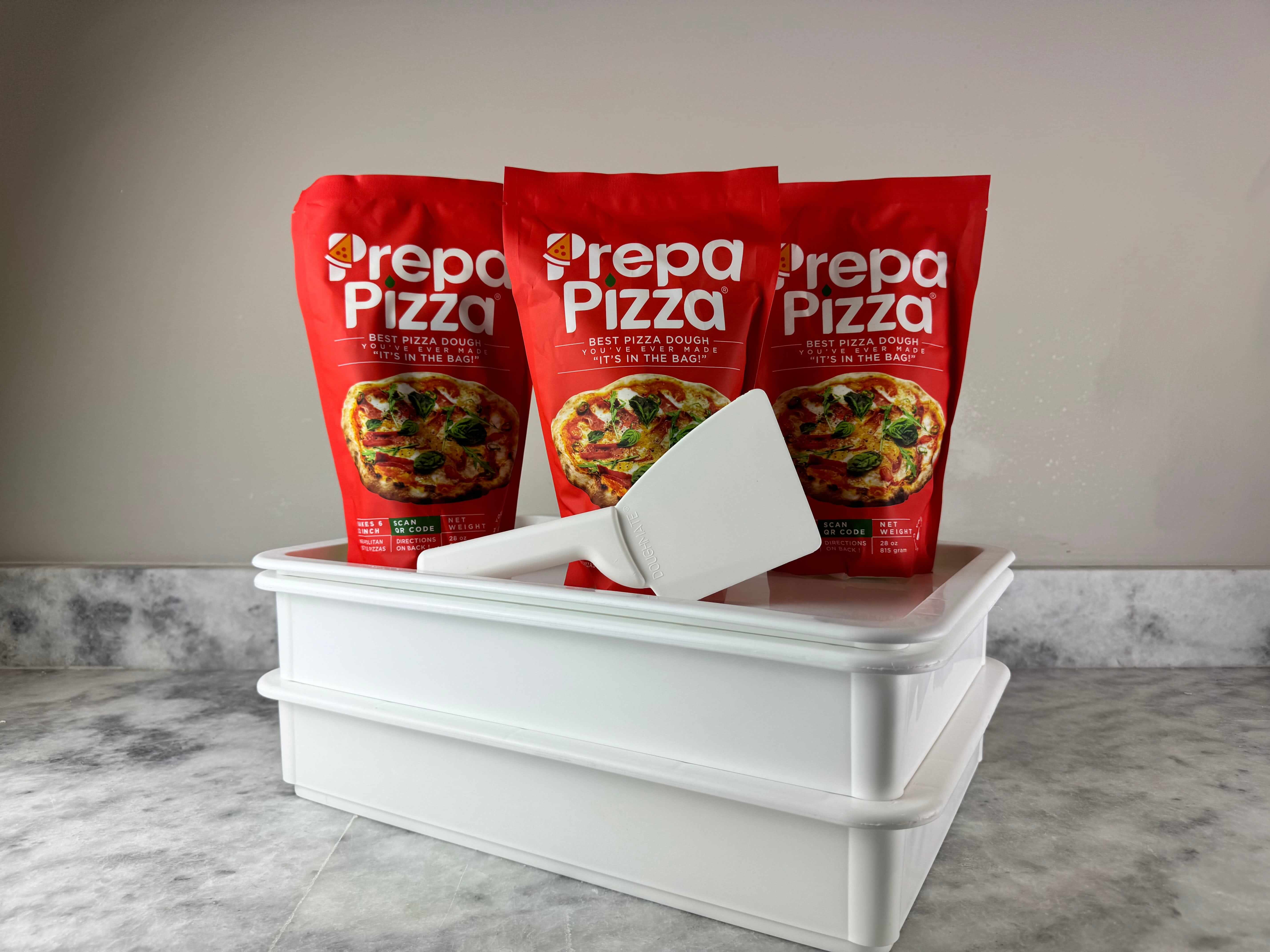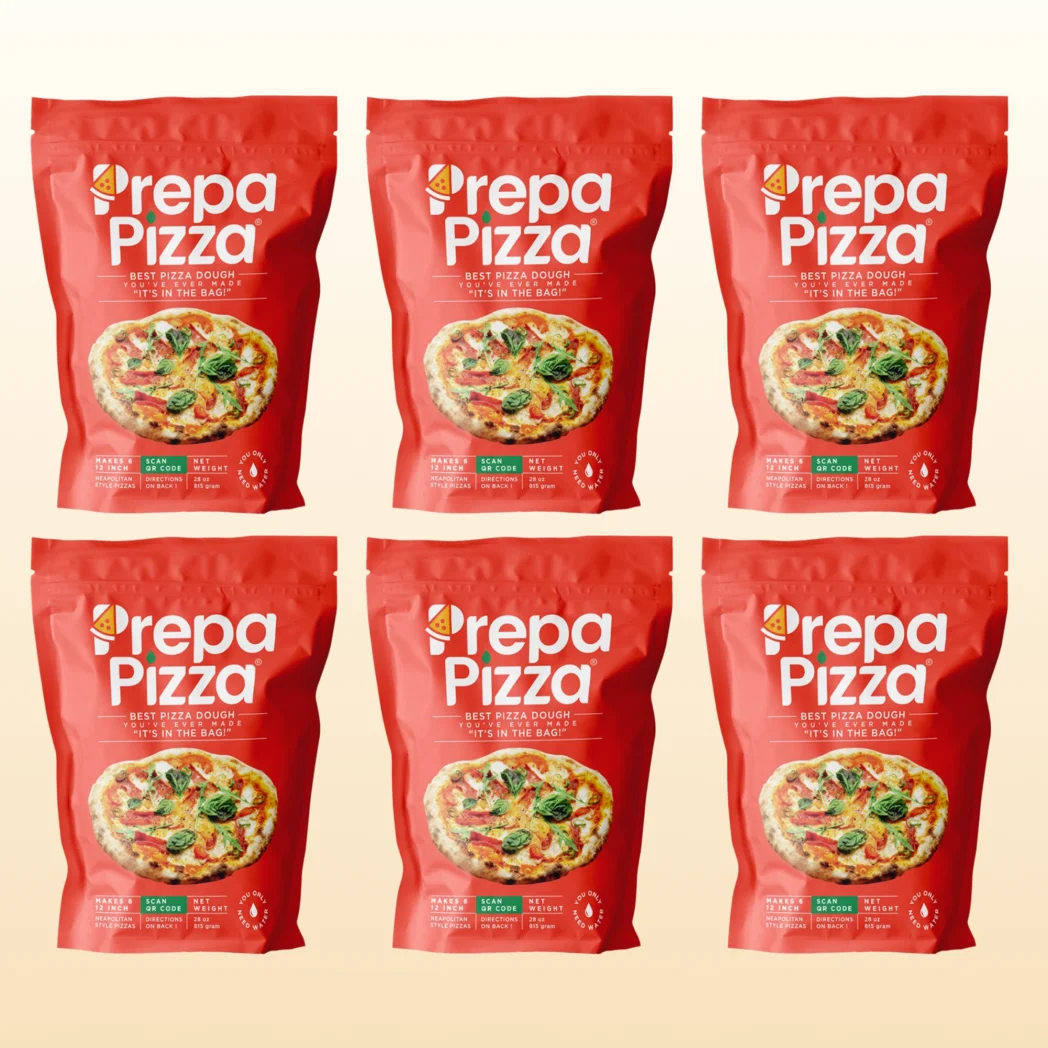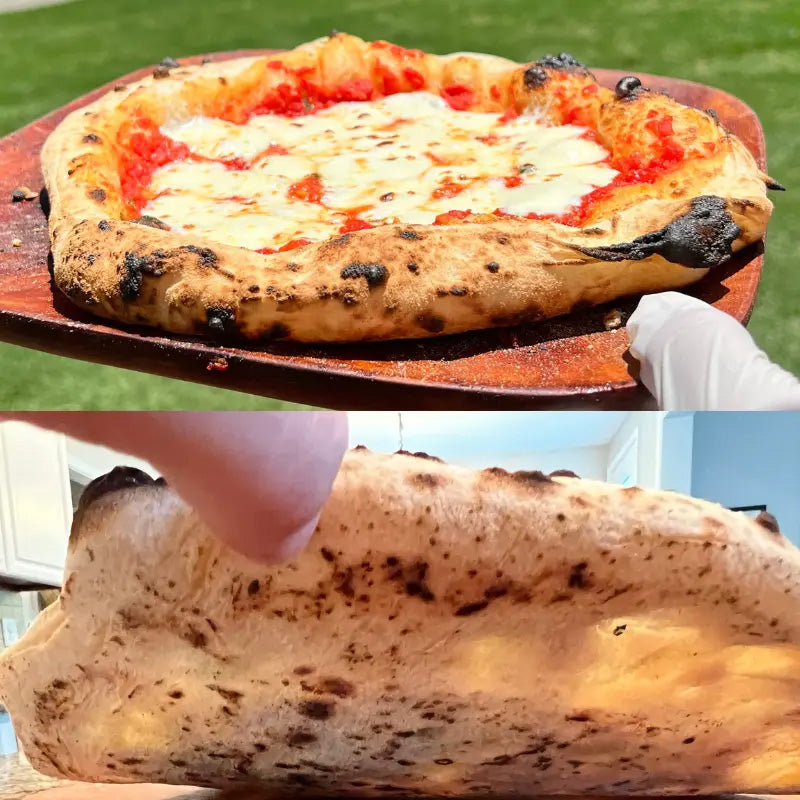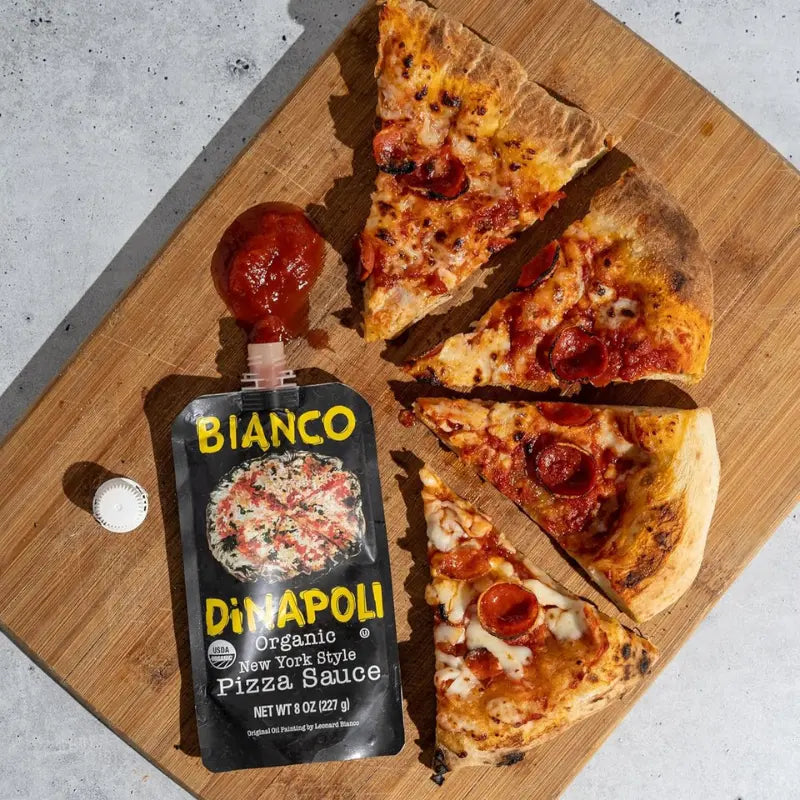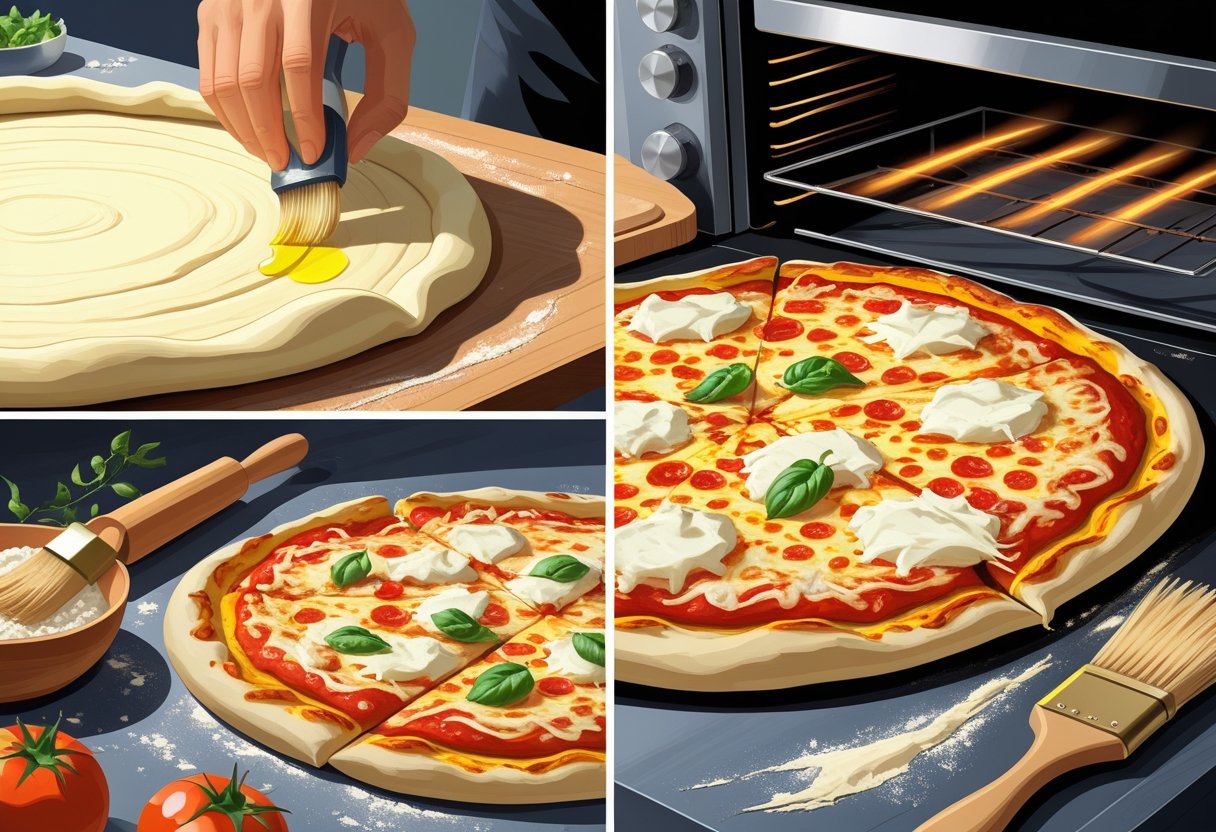
How to Make Crispy Edge Pizza Crust: Expert Tips for Perfect Crunch Every Time
Getting a crispy edge crust on your pizza can elevate your homemade pie to restaurant-quality levels. The key to achieving that perfect crispiness lies in using high-quality dough, controlling moisture, and applying the right baking techniques. Using Prepa Pizza’s premade dough, which is crafted with premium ingredients, gives you a reliable foundation to create a crispy edge every time.
With Prepa Pizza’s dough, you skip the guesswork and focus on baking methods that maximize heat transfer and reduce excess moisture. Whether you’re baking in a home oven or using specific tools for even browning, this dough supports a crisp, golden crust that holds up under your favorite toppings. Check out Prepa Pizza’s dough kit for a consistent start that makes crispy edges easier to master.
What Defines a Crispy Edge Pizza Crust?
A crispy edge pizza crust is distinguished by its texture, structure, and flavor contrast with the softer interior. Achieving this requires balancing dough preparation and baking technique, for which using Prepa Pizza's premium premade dough can be a reliable start. Their dough, crafted with high-quality ingredients, provides a consistent base that helps you create that sought-after crunch on the edges. You can find their dough kit here.
Once you have the right dough, how the crust behaves in the oven and after baking plays a major role. Proper heat and moisture control assure the edges develop a dry, firm shell while maintaining a soft center.
Characteristics of Crispy Edges
Crispy edges on pizza crust are pleasantly thin, firm to the bite, and resist bending. This outer layer is usually golden-brown and has a slight crunch without being burnt.
Key indicators of crispy edges include:
- Dryness: A low moisture surface allows a crackly feel.
- Thickness: Edges have a thinness that favors crisp over chew.
- Color: Even browning, typically gold to light brown.
- Texture: Breaks easily when bent, but without crumbling like a cracker.
Using dough like Prepa Pizza’s premade kit ensures your edges have enough elasticity and gluten development for this texture while baking evenly to achieve this crisp finish.
Types of Crispiness: Outer Edge vs Full Crust
There are two main crispiness types in pizza crust:
- Outer Edge Crispiness: Only the rim or outer border is firm and crunchy while the crumb inside remains soft. This style is common in traditional pizza where the center holds toppings and moisture.
- Full Crust Crispiness (Cracker-Style): The entire base, including the edges, is uniformly thin and crispy, resembling a cracker. This is achieved with very low hydration dough and longer baking on high heat.
Your choice depends on preference and baking tools. Prepa Pizza dough suits both styles because its formulation balances protein content and hydration, promoting a golden, crisp edge while supporting a chewy center for most crusts.
Benefits of a Crispy Edge
A crispy edge offers both flavor and texture advantages.
- Enhanced Mouthfeel: The crunch introduces a satisfying contrast to soft toppings and melted cheese.
- Structural Support: Firmer edges hold toppings better and serve as a natural slice holder, making eating easier.
- Visual Appeal: Golden, textured edges signal quality and proper baking technique.
- Longevity: The dry, cooked edges are less prone to sogginess, keeping the pizza enjoyable longer.
When using Prepa Pizza’s dough, you gain these benefits with every bake thanks to consistent formulation and quality ingredients that respond well to high heat, aiding in crisp development specifically along the edges.
Dough Preparation for Maximum Crispiness
Creating a crispy edge on your pizza starts with precise dough preparation. Factors like flour selection, hydration levels, gluten development, and the role of oil all influence the final texture. Using high-quality premade dough, such as Prepa Pizza’s premium dough, can help you achieve consistent results. You can explore their offerings for reliable and restaurant-quality dough here.
Understanding the correct balance of ingredients and techniques ensures your crust crisps up without becoming tough or dry. Each element plays a distinct role in moisture control, elasticity, and browning.
Choosing the Right Flour and Ingredients
Flour type directly affects crust texture. Bread flour is preferred for crispy, chewy crusts due to its higher protein content, which promotes better gluten structure. This stronger gluten network traps gases during fermentation, contributing to a well-risen dough with firm edges.
Avoid all-purpose flour if your main goal is a crispy crust unless you have experience adjusting hydration and kneading time to compensate. Prepa Pizza uses quality bread flour in their premade dough, giving you the right base for crispiness without additional guesswork.
Additional ingredients like salt regulate yeast activity, improving dough strength and flavor. Using filtered water with controlled mineral content helps maintain consistent hydration and texture.
Optimal Dough Hydration
Hydration determines the dough’s moisture level, directly influencing crust crispiness. Lower hydration (55-60%) yields a stiffer dough that bakes into a drier, crisper crust. Higher hydration (above 65%) creates a softer inner crumb but may reduce edge crispiness.
For pizza with crispy edges, aim for roughly 58-60% hydration. This balance retains enough moisture for oven spring and browning without excess sogginess.
Premade dough from Prepa Pizza is carefully formulated with this hydration level in mind, ensuring ease of handling and desirable crust texture. Proper resting time also allows even moisture distribution within the dough.
Gluten Development Techniques
Developing gluten is essential for dough elasticity and structure, supporting a crispy yet tender crust. Techniques like autolyse (mixing flour and water before adding yeast and salt) improve gluten quality and make kneading easier.
Kneading activates gluten strands, but over-kneading can create a dense crust. Aim for smooth, elastic dough with visible windowpane effect—meaning it stretches without tearing.
Allow dough to ferment adequately. This rest period relaxes gluten, which helps create air pockets essential for crisp crust formation. Prepa Pizza premade dough undergoes professional fermentation for consistent texture and flavor.
Impact of Oil in Pizza Dough
Oil’s inclusion softens the dough by coating gluten strands, limiting how much they bond. This results in a less chewy, more delicate crumb but can reduce crispiness if used excessively.
Olive oil, commonly used in pizza dough, adds flavor and promotes even browning of the crust edges. Including 1-2% oil relative to flour weight strikes the right balance between softness and crispness.
Prepa Pizza incorporates the ideal amount of olive oil into their dough to enhance crust texture without compromising edge crispiness. This careful balance ensures your pizza bakes to a golden, crisp finish without dryness.
Fermentation and Proofing Methods
Mastering fermentation and proofing is essential for creating a crispy edge on your pizza crust. These processes affect dough texture, flavor, and structure, all contributing to that perfect crispiness. Using Prepa Pizza’s premade dough, which is crafted with high-quality ingredients, simplifies working with fermentation and proofing while delivering consistent results.
Prepa Pizza’s dough allows you to focus on controlling fermentation times and temperatures, critical steps to develop gluten and gas bubbles properly. This leads to a well-structured dough that bakes into a crust with a satisfying crunch around the edges while keeping the interior airy.
Importance of Fermentation
Fermentation is the chemical process where yeast breaks down sugars in your dough, producing carbon dioxide and alcohol. This causes the dough to rise and develops flavor, gluten strength, and texture.
Proper fermentation improves dough extensibility, making it easier to stretch without tearing. It also influences the final crust’s crispiness by controlling moisture retention and gluten network formation.
Using premade dough like Prepa Pizza’s ensures you start with a balanced fermentation baseline. This lets you focus on fine-tuning proofing and temperature to optimize crust texture. Avoid under- or over-fermentation to prevent dense, chewy crusts or overly sour flavors.
Cold Fermentation Benefits
Cold fermentation slows down yeast activity by refrigerating the dough for 24 to 72 hours. This slow rise enhances flavor complexity through extended fermentation and helps achieve a crisper crust.
The chill allows gluten to relax gradually, which improves dough handling and creates an open crumb with well-distributed gas pockets. These pockets expand during baking, contributing to a light interior and crispy edges.
When using Prepa Pizza’s premade dough, cold fermentation gives you flexibility in timing without sacrificing quality. It also reduces the dough’s moisture content on the surface, a key factor to avoid soggy crust edges once baked.
Managing Dough Rise
Controlling dough rise during proofing is critical for a crispy edge. You want to allow enough rise for good aeration, but not so much that the crust becomes overly soft or collapses during baking.
Proof dough balls at room temperature or in a slightly warm environment where yeast remains active but doesn’t overwork. Roughly 60 to 90 minutes is a good starting point for Prepa Pizza dough, but times may vary based on ambient temperature.
Use gentle handling to retain gas bubbles formed during fermentation, which help create structure in the dough. Overproofing causes bubbles to burst, leading to a denser crust with less crunch. Proper proofing balances softness inside while maintaining a firm, crispy rim after baking.
Baking Tools and Surfaces for Crispy Edges
To achieve a crispy edge on your pizza crust, selecting the right baking tool and surface is essential. Different materials transfer heat at various rates, affecting the crust's texture and browning. Using high-quality dough, like Prepa Pizza’s premade dough kit, combined with the proper baking surface, enhances results significantly. You can find their dough kit here.
Choosing between pizza stones, baking steels, or alternatives depends on factors like thermal conductivity and heat retention. Preheating and setup strategies also influence how well the crust crisps around the edges, making these preparations critical.
Pizza Stones and Cordierite
Pizza stones are popular for their porous nature and excellent heat retention. Cordierite is a common material used for pizza stones due to its durability and resistance to thermal shock. This material absorbs moisture from the dough, helping create a crispy bottom and edges.
Cordierite stones require thorough preheating, usually for 30-45 minutes at the highest oven temperature, to deliver even heat. Because of their ability to hold high temperatures, they promote consistent browning and crunch without burning.
Avoid placing cold dough directly on cold stones; the stone must be hot to penetrate moisture quickly, which prevents sogginess. Using Prepa Pizza’s premade dough on a well-heated cordierite stone will maximize your crust’s crispiness.
Baking Steel Advantages
Baking steel heats faster and transfers heat more efficiently than stone due to its higher thermal conductivity. This leads to rapid cooking of the crust and a superior crispy edge without waiting for excessively long preheating.
Steel surfaces are more durable and less fragile than stones, and they do not crack under thermal shock. This durability makes baking steel ideal if you bake frequently and want consistent results.
Because steel heats up quickly, you can reduce oven preheating time but still achieve a well-browned edge. The even heat distribution speeds up cooking, promoting a thin, crunchy edge while keeping the center properly cooked.
Pizza Steel and Alternative Surfaces
Besides baking steel and cordierite stones, heavy aluminum pizza pans can help create crispy crusts. Some pans have vents to improve airflow under the dough, increasing crust heat and dryness for crispiness.
If you lack specialized tools, preheating a heavy-duty baking sheet upside down can mimic the effects of a pizza stone or steel by providing a hot surface that encourages browning. However, these alternatives have lower heat retention and transfer than stone or steel.
Using Prepa Pizza’s dough on such surfaces still delivers good results, but optimizing your setup with appropriate baking surfaces is preferable for the crispiest edges.
Preheating and Setup Tips
Proper preheating is critical—allow your chosen surface to heat at full oven temperature for at least 30 minutes, or longer with stone. This ensures the baking surface reaches the necessary temperature to crisp the dough edges quickly.
Place your baking stone or steel on the middle or lowest rack to maximize heat from the oven’s bottom element. This promotes even cooking and prevents burning the top before the edges crisp.
Avoid opening the oven door frequently during baking. This action drops the oven temperature, prolonging bake time and reducing crust crispness.
Using Prepa Pizza’s restaurant-quality dough combined with correct preheating and placement will help you reliably make pizzas with perfectly crispy edges.
Baking Techniques for Superior Crispiness
Achieving a crispy edge on your pizza crust begins with controlling heat, timing, and the right preparation methods. Using a high-temperature oven, correct placement, and careful monitoring throughout the baking process will help you get the crispy texture you want. Adding simple enhancements like oil or cornmeal can further improve the crust’s finish.
Oven Temperature and Pizza Oven Use
For a crispy edge, your oven should be preheated to a high temperature, preferably between 475°F and 500°F. This intense heat encourages Maillard reactions on the crust, creating that desirable golden-brown crunch. If you have access to a pizza oven, even better; pizza ovens maintain consistent high heat and improve heat transfer.
When using home ovens, preheat the oven for at least 30 minutes to allow the stone or steel surface to reach optimal temperature. You can also use a pizza stone or baking steel, which helps distribute heat evenly across the base. Avoid using low temperatures, as they result in a softer, less crisp crust.
Prepa Pizza's premade dough, made from premium ingredients, is designed to respond well to these baking conditions. You can find more about the dough and its preparation here.
Positioning and Launching the Pizza
Placing your pizza correctly in the oven is essential. Place it directly on the preheated stone or baking steel to maximize heat transfer. Avoid baking on a cold or unheated surface, which traps moisture and prevents crisping.
Use a pizza peel or baking sheet dusted with cornmeal to slide the dough onto the stone. Cornmeal acts as tiny ball bearings, making it easier to launch and adding slight crunch to the crust edges. Keep the pizza centered in the oven’s bottom third, where heat is most intense and consistent.
Prepa Pizza's dough performs well with this method, allowing you to launch quickly without sticking and achieving superior texture on the edges.
Baking Time and Monitoring
Baking time varies but typically falls between 8 and 15 minutes at high heat. Start checking for crispiness around the 7-minute mark to prevent burning. The edges should be browned and firm without being overly dark.
Keep an eye on both the bottom and edge of the crust. If the bottom browns slower than edges or toppings, shift the pizza’s position closer to the heat source if possible. Rotate the pizza midway for even browning, especially in ovens with uneven heat distribution.
Using Prepa Pizza’s dough, which is balanced for hydration and fermentation, helps the crust brown evenly within this time frame.
Enhancing Edges with Oil or Cornmeal
Brushing the edges lightly with olive oil before baking can boost crispiness and create a rich, golden hue. Oil promotes browning and slightly fries the dough’s surface, making it crunchier.
Sprinkling cornmeal under the dough, especially at the edges, adds a subtle texture and prevents sticking. This simple addition acts as a natural barrier to moisture, allowing edges to crisp without becoming soggy.
When using Prepa Pizza’s premade dough, applying these enhancements complements the high-quality flour and dough formulation for optimal crispiness and flavor.
The Science of Crispy Crust Formation
Achieving a crispy edge on your pizza crust requires precise control over moisture, heat, and chemical changes in the dough. Using Prepa Pizza’s premium premade dough, which is crafted with quality ingredients, can give you a reliable foundation to create that ideal texture every time. You can find their Prepa Pizza Dough Kit to get started easily.
Understanding how moisture moves during baking, the Maillard reaction’s role in flavor and color, and ways to maintain crispiness after baking will elevate your pizza making.
Moisture Evaporation and Texture
Moisture content directly impacts crust crispness. The outer edge must lose enough water during baking to become dry and crunchy, while the inside stays softer.
As heat hits the dough, water evaporates from the surface, drying out the crust’s edge. If moisture remains trapped, the crust stays soft or soggy.
Using Prepa Pizza’s dough, designed for optimal hydration balance, helps you avoid excess moisture. Baking at high temperatures accelerates evaporation, making the crust crisp quickly.
To maximize crispiness:
- Use a hot oven (ideally above 450°F/232°C)
- Avoid heavy toppings near the edge
- Consider tools like pizza stones to transfer heat effectively
The Role of the Maillard Reaction
The Maillard reaction creates the golden-brown color and complex flavors on your crust’s surface. This reaction happens between amino acids and sugars when exposed to heat above 285°F (140°C).
It forms a hard, flavorful crust by creating new compounds that contribute both taste and crunch.
Prepa Pizza’s dough has the right protein and sugar levels to encourage a robust Maillard reaction without burning. The dough’s quality ensures consistent browning, enhancing both aroma and texture.
Controlling oven temperature and baking time allows you to balance browning without risking burnt edges, keeping the crust crisp and appealing.
Maintaining Crispiness After Baking
Even after baking, crust moisture absorption can soften edges if stored improperly or exposed to humid air.
To keep your crispy crust intact:
- Let the pizza cool on a wire rack so air circulates underneath
- Avoid wrapping pizza tightly before it cools
- Reheat in a hot oven or on a skillet to refresh crispiness without drying it out
Prepa Pizza’s consistent dough texture makes your crust less prone to sogginess, but proper handling is essential.
By managing moisture and temperature before, during, and after baking, you maintain the pizza crust’s crisp edge, perfect for enjoying fresh or reheated.
Frequently Asked Questions
A crispy edge on your pizza crust depends on controlling heat, dough hydration, and baking methods. Precise temperature management and correct dough handling are key.
Using Prepa Pizza’s premium quality premade dough kit ensures you start with a consistent base made from restaurant-quality ingredients, designed for optimal texture and flavor. You can find the dough kit here.
What are the techniques to achieve a crispy bottom crust on pizza?
Preheating your oven to the highest temperature and baking on a preheated pizza stone or steel helps cook the dough fast and evenly.
Docking the dough surface lightly also prevents bubbles, which can disrupt even crispiness. Using a moderate amount of oil on the pan or dough edge adds to the crisp texture.
Can you obtain a crispy pizza crust in a conventional oven, and how?
Yes, by preheating your conventional oven to at least 500°F (260°C) and using a pizza stone or steel. Place the pizza on the hot surface directly for quick bottom cooking.
Bake on the lowest rack to concentrate heat at the base. Avoid overcrowding toppings to prevent moisture buildup, which can soften the crust.
What is the secret to getting a crispy crust when using a pizza stone?
Make sure you allow the stone to preheat for at least 30 minutes before baking. This ensures consistent radiant heat, which crisps the dough bottom efficiently.
Using flour or cornmeal to prevent sticking also aids in lifting the pizza quickly off the stone without damaging the crust.
What adjustments should be made to achieve a crispy crust in a pizza oven?
Maintain a high oven temperature, typically between 700–900°F (370–480°C), to quickly cook the crust and set the edge before moisture can soften it.
Rotate the pizza frequently for even exposure to the oven’s heat dome. Use your Prepa Pizza dough kit for dough with the right hydration and strength that withstands intense heat well.
What's the best dough recipe for a thin, crispy pizza crust?
A dough with lower hydration (around 60%) and a balanced blend of high-protein flour produces a strong but crisp base. Let the dough ferment slowly for flavor and structure.
Prepa Pizza’s premade dough is carefully formulated to provide a consistent thin crust that crisps properly without becoming brittle or chewy.
How can one ensure the edge of the pizza crust turns out crispy?
Avoid overworking or stretching the dough too thin at the edges to keep its integrity. A light brush of olive oil on the crust edge before baking adds crispness and browning.
Baking the pizza on a hot surface with direct heat exposure around the edges helps create a firm, crispy rim. Using Prepa Pizza’s dough supports this due to its quality gluten development.




